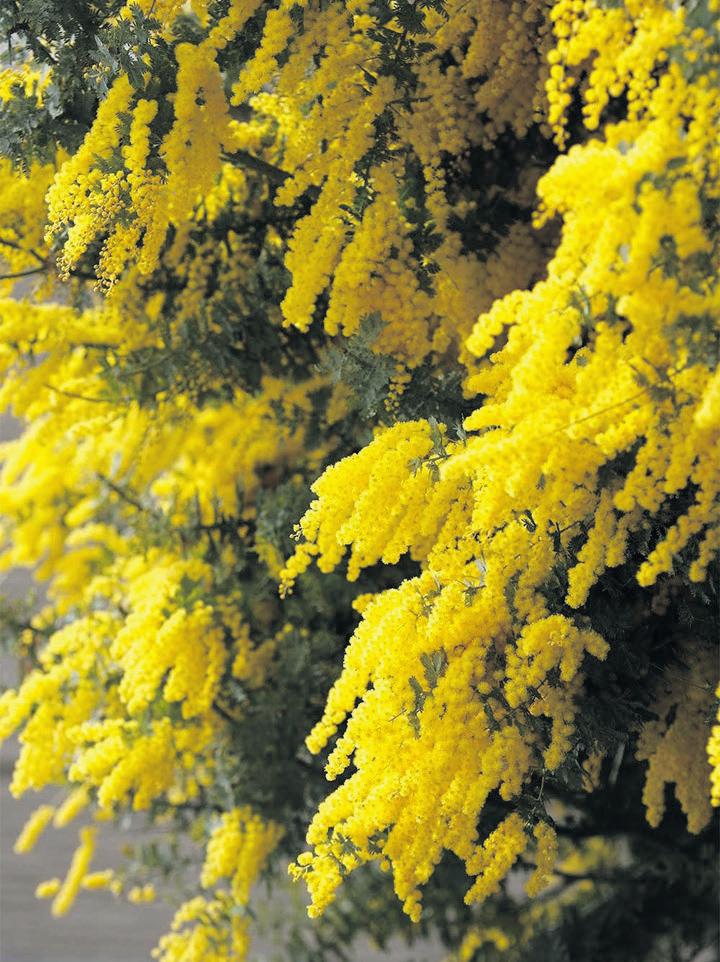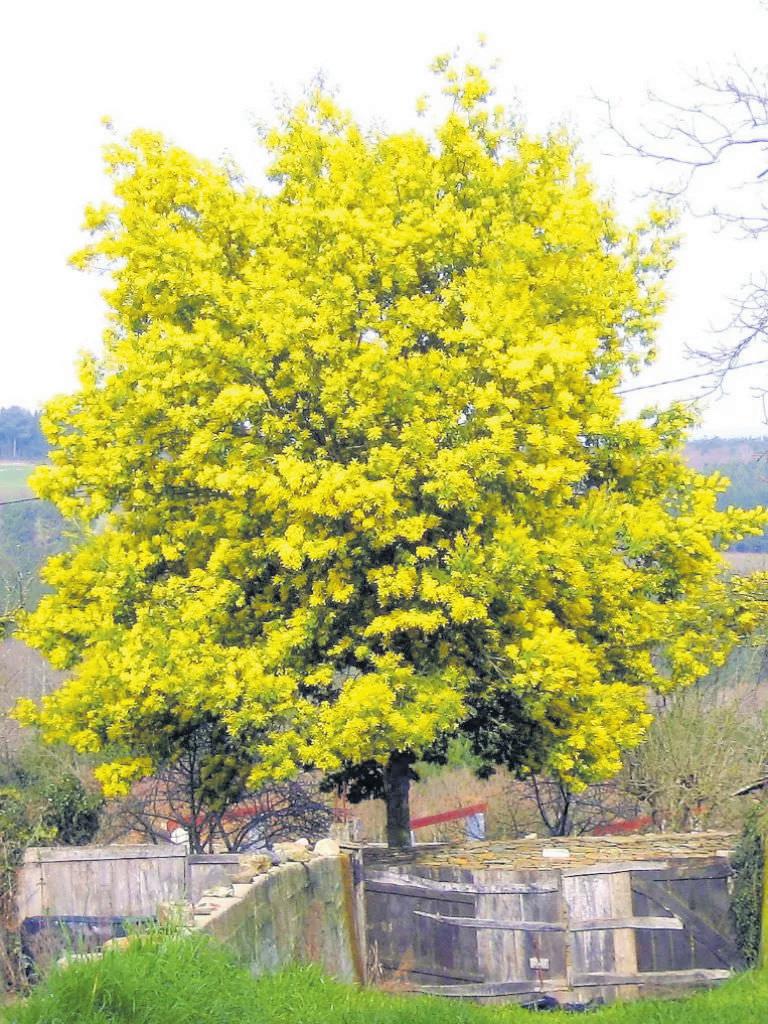
3 minute read
HOW TO GROW AND CARE FOR WATTLE This spring make the atmosphere of your garden sunnier!
BY JEFFREY GIBBS
Wattles always leave us stunned with their stunning bright yellow fowers and lovely aroma, and Acacia species truly excel and impress with their performance.
Wattle is forgiving of neglect and grows quickly to bloom plentifully with its gorgeous fowers, and the number of species present in Australia is astounding - with estimates placing it at upwards of 850 distinct kinds!
Their growth habits can be incredibly diverse - some are large trees while others are tiny ground covers or screen plants. In the current years, there have been some new compact plant breeds that have stunning foliage. These make them great for growing in bigger pots or tubs.
Quick to shine.
Growing quickly and fowering abundantly when young - that’s the lively wattles for you! Similarly, their lifetime may be limited lasting anywhere from seven to twelve years. On the other hand, you can make use of this in your favour.
Wattles excel at colonising making them well-suited for growth on freshly cleared or disturbed ground, and one of their benefts is that they provide protection to more vulnerable understorey plants from above.
When confronted with barren land in one’s to see their tendencies towards colonization in person is by observing an area of burnt-out foliage and taking note that wattles usually sprout up frst - acting as true trailblazers for others.
Aspect
The growth of wattles is highly favourable in spots that experience abundant sunshine as well as areas with some shadow, but good tolerance towards extreme temperatures doesn’t necessarily
Soil
While wattles can tolerate various soil types, they do require proper drainage. Therefore, avoid growing them in boggy locations that fail to dry out quickly following heavy rainfall.
Watering
Young tree growth can fourish by consistently watering them during their establishment stage, while wattles prove to be sturdy and frugal once they have found a resting place; they require minimal moisture from rainfall to prosper. Your plants need extra care when temperatures rise don’t forget to hydrate them during heatwaves or droughts
Fertiliser
Since wattles have the capacity to fx their own nitrogen there is no need to feed them, they can coexist alongside other local fora even if given just a little bit of blood and bone or a lowphosphorus diet.
Maintenance
By tipping young plants or those recently in fower you can remove optimal growth put the plant in an area with some shade and make sure that the soil remains moist. Within just days or perhaps even weeks at most, you may see the seeds sprout. How to grow wattle in small pots
If you are looking to plant an Acacia cognata species such as “Limelight” in a limited space then these tips will be useful.
1. Choose a pot that is at least twice the size of the selected plant. Choose a spot for your garden where it can get both full sunshine as well as some shade elegant look to cute with a small stature accompanied by rippling borders or standing proud on the wall as specimens - these plants draw attention when they produce their signature blaze of scarlet blooms
2. Position in hole and backfll with potting mix, gently frming down.
Check with your local council frst Consulting with your local authority is crucial before buying a wattle, despite the fact that they come from Australia certain plants could still be considered weeds within your region and referred against. Examples show that planting Cootamundra wattle (Acacia baileyana) along with the silver or Mount Morgan wood thicker than a pencil.
In order to keep roots cool and maintain adequate levels of soil moisture while limiting weed growth, it’s recommended that you apply a layer of natural leaf litter or chunky bark. Ensure that there is enough space between it and the trunk.
How to propagate wattles
Wattles are usually propagated by using seeds and long seedholding pods are created by the plant during growth. For successful germination of the seeds with tough coats, they should be soaked in hot water for a period of 24 hours. Take only those seeds that are swollen or abrade them by rubbing them with sandpaper to ensure proper growth. Ensure that you properly space your individual plants about 5 cm apart within a seed-raising mixture having a good drainage system. After that, you are to press gently downwards on all plants, and it is important to water. For
Drawing water from the well is possible
3. Feed in Autumn and Spring with a fertiliser to ensure strong root development.
4. However, water is only required for young plants, but for older wattles showing signs of distress give a soak in a very dry period.
Wattle for small gardens
Wattles that are unattractive or big in size when not blooming may not thrive in your garden, but breeders have managed to produce many different types of smaller wattles that suit the needs of an Australian garden. Whether tall with an variety (A beyond the borders of NSW is not recommended, as the growth of podalriifolia occurs elsewhere rather than in Queensland.

Wattle seeds
Wattles produce a lot of hanging seed pods once their fowering period comes to an end, and it’s been a dietary staple among Indigenous communities for over 60k years with versatile applications. If you’re looking for ideas with your four, try it out in some damper or bread recipes – otherwise, put your skills to the test with this recipe for Kakadu plum and wattleseed brownies.










